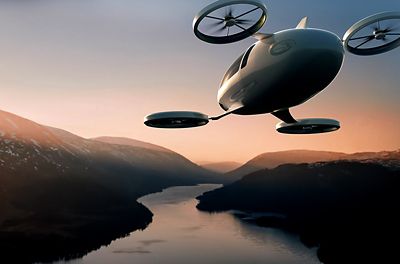-
United States -
United Kingdom -
India -
France -
Deutschland -
Italia -
日本 -
대한민국 -
中国 -
台灣
-
-
產品系列
查看所有產品Ansys 致力於提供免費的模擬工程軟體給學生,以協助當今的學生獲得傑出的表現。
-
ANSYS BLOG
March 17, 2021
Uncharted Waters: Simulation Helps Design What Could be the World’s Fastest Sailboat
The current world speed sailing record of 121 kph (75 mph) was set in 2012, but a 40-person team of students and early career engineers from the Swiss Federal Institute of Technology Lausanne (EPFL) is working to blow that long-standing achievement out of the water.
 ©Guillaume Fischer
©Guillaume Fischer
他们设计了希望将世界d’s fastest sailboat, which they’re calling the SP80. Their goal is to achieve a history-making average speed of 150 kph (93 mph) over a one-way, 500-meter (one-third mile) distance during the World Sailing Speed Record Council (WSSRC)’s 2022 season.
Considering the SP80 is expected to go two or three times wind speed, it’s not surprising that it looks nothing like a conventional sailboat. It doesn’t behave like one, either.
 ©Guillaume Fischer
©Guillaume Fischer
For example, instead of sails for propulsion, the SP80 is outfitted with a kitesurf wing, which generates more power while helping the boat remain stable at high speeds. The SP80 also has ventilating hydrofoils — winglike appendages that hook the hull in the water to keep the boat from lifting out completely — that the team simulated and validated inAnsys Fluent. The hydrofoils are the only parts of the SP80 that actually enter the water.
Optimizing Hydrofoil Design for High Speeds
Given the goal of setting a speed record, using a kitesurf wing was an obvious choice, according to Mayeul van den Broek, who co-founded the project with with Xavier Lepercq and kitesurfer Benoit Gaudiot in 2018. With that piece of the design puzzle in place, the team spent more than a year looking at different configurations. Much of their work centered around optimizing hydrodynamics to ensure that at top speed the boat and the hydrofoils would remain in contact with the water and not send the boat sailing into the air.
“We’re making something new, and we need to learn how it will perform. Simulation is the perfect tool.”
- Benoit Gaudiot
First, the team had to understand the effect of cavitation on the hydrofoil’s lifting surface. Cavitation occurs when there are rapid changes in water pressure as the boat’s speed increases, creating bubbles that lead to small, vapor-filled cavities on the top of the hydrofoil. The vapor bubbles cause instability, draft and vibration that impede acceleration.
 ©Guillaume Fischer
©Guillaume Fischer
Cavitation is a problem for conventional drop-shaped hydrofoil profiles, but it occurs less frequently with — and may even be prevented by — triangular-shaped ventilating profiles.
However, ventilating hydrofoils are not widely used and recent research into them is scarce. To determine if the profile really was the optimal shape for the SP80, the team combined experimental and numerical tests. Gaudiot, who will pilot the SP80 in its record-setting attempt, began by taking to the water to validate the hydrofoil concept at high speed.
"I had a real feeling of stability at high speeds,” he said. “We reached more than 40 knots easily and without struggling to accelerate or stay on the board.”
At this point, the team had already tested more than 20 different hydrofoil profiles using a cavitation tunnel and numerical simulation in Fluent. CADFEM, a leading provider for simulation-based engineering and an Ansys channel partner, advised the students and engineers throughout the simulation process.
To simplify the problem and avoid modeling the free surface, which can be very complex, studies began in 2D. The team then refined all the solver parameters before transposing the settings to a 3D model. Using Fluent enabled them to generate more than 500 simulations in record time. The results obtained from Fluent were fed into a neural network, making it possible to predict the performance of any form of hydrofoil.
 ©Guillaume Fischer
©Guillaume Fischer
Considering More Ideas, Gaining More Speed
The EPFL team is now testing a reduced-scale prototype of the SP80. Construction of the unique, futuristic craft is expected to begin in March 2021.
Gaudiot said thatFluentenabled the team to virtually test a very large number of designs and explore shapes they might not have thought of otherwise. Perhaps best of all, the group confirmed a performance gain of almost 20%, which translates into more speed.
“We’re making something new, and we need to learn how it will perform,” he said. “Simulation is the perfect tool.”
查看 Ansys 的服務與產品
查看 Ansys 的服務與產品
立即聯絡我們
感謝您聯絡我們!
We’re here to answer your questions and look forward to speaking with you. A member of our Ansys sales team will contact you shortly.













